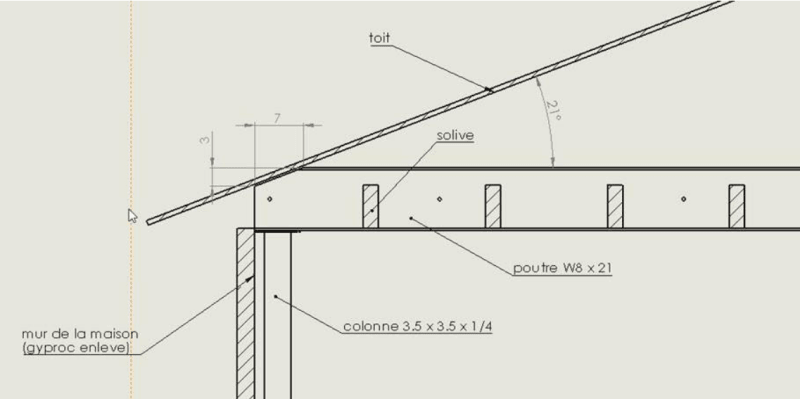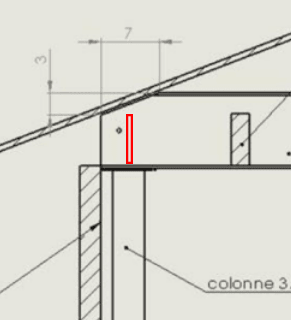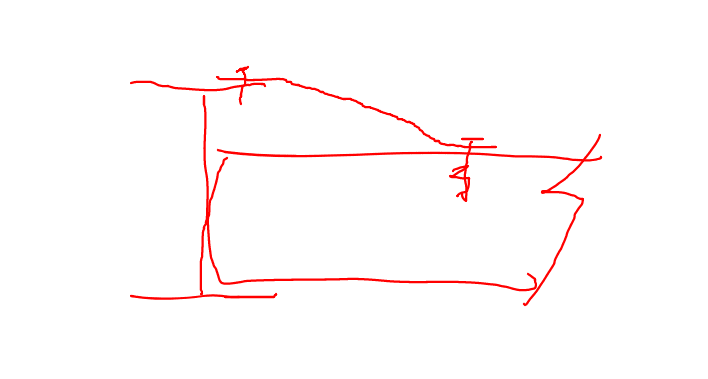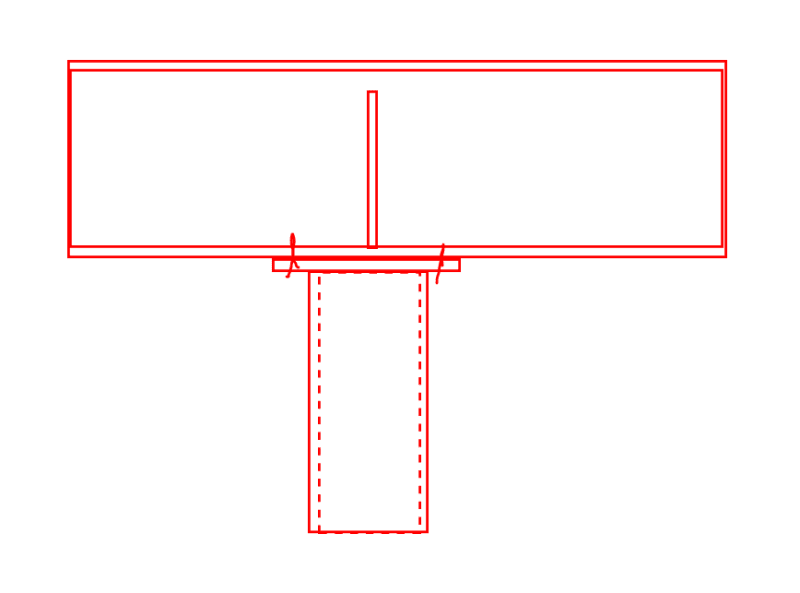Montreal.eng.
Structural
Hello, I have a customer that is asking if it's possible to bevel cut a steel beam in order for them to recess a W8x31 beam into their attic. In my opinion if the cut doesn't go beyond the support width it doesn't weaken the beam in shear nor in bearing. The load on the beam isn't immense, It carries some of the roof and attic load, the steel beam and columns was at the request of the client that works for a steel company.
I just want to make sure that I'm analysing this correctly.
Also, since the top of the beam will be popping into the attic, I will have to ensure top lateral bracing at supports. Do you guys have any efficient way to do this? Is a
The sketches below are written in french (If the name isn't obvious enough I'm from Montreal, Quebec)
Poutre = beam
colonne = column
Solive - Joist
Toit = Roof

Thank you in advance,
I just want to make sure that I'm analysing this correctly.
Also, since the top of the beam will be popping into the attic, I will have to ensure top lateral bracing at supports. Do you guys have any efficient way to do this? Is a
The sketches below are written in french (If the name isn't obvious enough I'm from Montreal, Quebec)
Poutre = beam
colonne = column
Solive - Joist
Toit = Roof

Thank you in advance,



